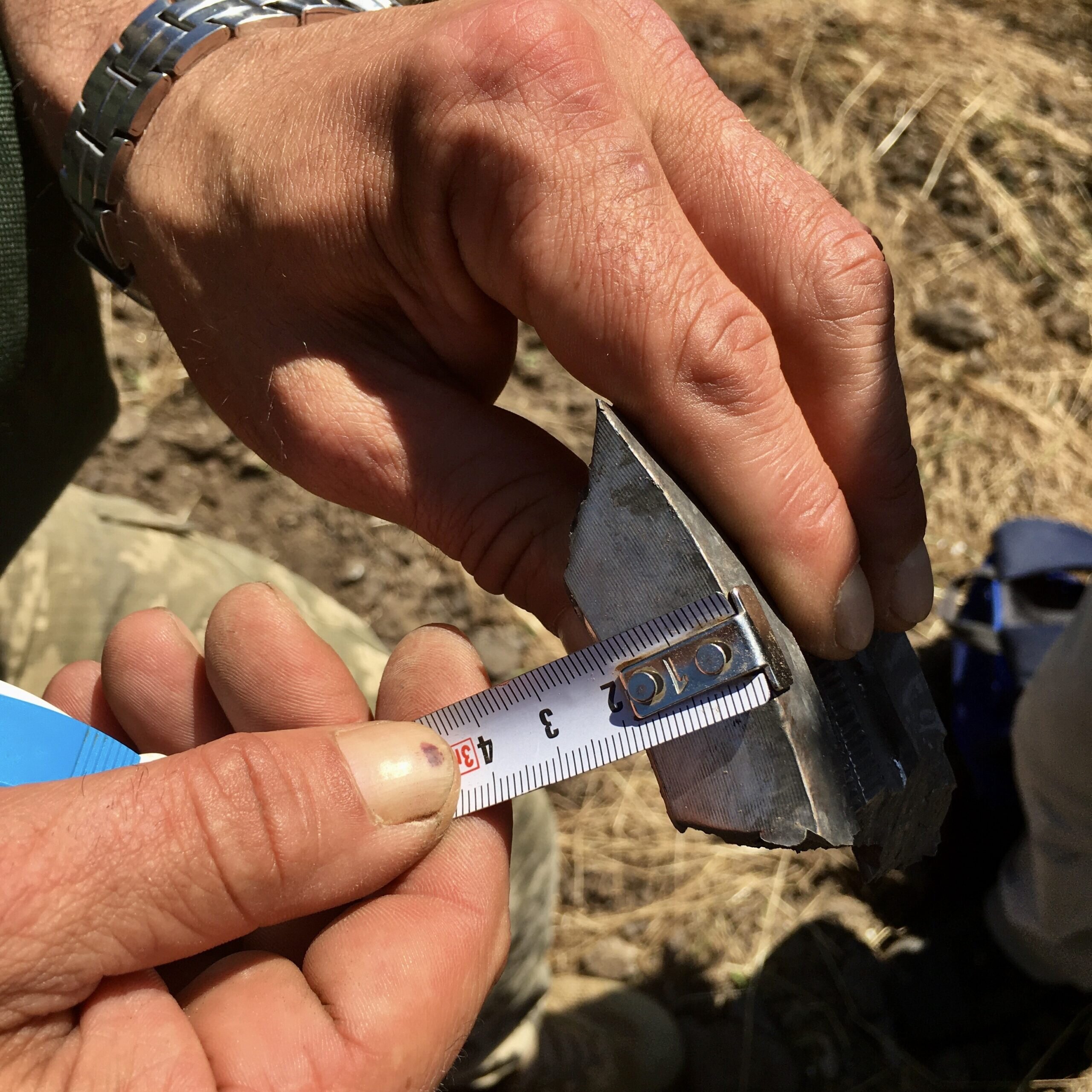Away from dramatic drone images and stories of individual bravery and collective suffering, there is a slow, steady war of centimeters and azimuths taking place in southern Ukraine.
After waiting nervously in a cement foxhole for the all-clear, we emerge to stand with Major “Sasha” on a mound of dark earth ripped from a Ukrainian paddock of ripe green hay. Small blue butterflies swirl about our legs. It’s unrelentingly hot in the way that only open fields get in summer on the steppes.
We could be farmers looking to fix an irrigation point or test soil quality. Alas, we are not. We are a small group of two younger soldiers and two older journalists wearing combat helmets and flak jackets.

Sasha unclips a tape measure from his bullet-proof vest and gets to work. His daily task is to document artillery and rocket attacks by Russian forces in the Mykolayiv region. Where the targets are residential and civilian, this task extends to gathering evidence of war crimes to help bring proceedings against Russian President Vladimir Putin and his army of droogs.
The young major, a soldier since 2014 in Donbas, extends his metal tape. Using an app on his cell phone, he records the length and depth of the crater from an artillery strike near a defensive position held by Ukrainian forces. He checks the angle of inclination from the shell’s impact and the direction of the scatter of dirt and debris. Then, with an old brass field compass, Sasha strikes an azimuth for the likely direction that the shell came in from.

Shrapnel from the shell is strewn about the site. Wearing yellow-tinted shooter’s sunglasses, Sasha pulls out jagged pieces from the crater hole. It’s sharp razor wire and heavy in the hand. Sasha explains the different textures and colors in the material that was once part of a 110-kilogram shell with a circumference of 203 millimeters.

His small investigation soon comes to an end and Sasha lights up a cigarette. He explains that it’s likely that the salvo was fired by a Russian Peony artillery piece. He Googles a picture. It’s a ‘shoot and scoot’ self-propelled howitzer (SPH) – a long gun and barrel mounted on a large-tracked vehicle. It’d capable of firing at targets up to 35 kilometers away, then quickly getting away. The Russian army has some 60 such pieces.
Judging by the evidence, Sasha believes the two salvos fired at our, the other undetonated and buried in the paddock, came from some 25 kilometers south. That would put it in Russian-occupied Kherson oblast on the other side of the Bug river, perhaps from near Chornobaivka. He indicates that further intelligence can be gathered, including from drones and spies, to see if they can pinpoint a position and whether it is within the range of the Ukrainians’ own guns.
All in all, a deadly game of hide-and-seek where no one sees one other until it’s too late.
It is rumored but not confirmed that a battery of American-donated M777 howitzers, with superior mobility and range than Soviet-made weapons, may be operating. Sasha says, if it were to be true, it’s way too little for the tasks at hand.
His companion, Captain Dmytro Pletanchuk, explains that Russian forces now have three rings of dug-in defense around occupied Kherson, and that their main objective is to hold the boundaries of that oblast for political purposes. He adds that they have some seven Battalion Tactical Groups (BTGs) to do it, including forced conscripts from areas they control.
This is a repeat of Russian tactics not only in occupied Donetsk and Luhansk, but the span of their imperial and Soviet history.
“They want to engineer a fake vote to create an imaginary place, be it New Russia or some other dreamt up name”, Pletanchuk states. “If empires aren’t spreading, they die, so they need that territory as their own.”
The Ukrainians are currently contesting villages to the south of Mykolayiv city, such as Oleksandrivka, but the challenge of crossing the Dnipro and mounting a full counterattack is vast.
“On the ground, we’re fine. But their guns generally go further than ours, and we lack necessary control of the air to really go forward. That includes the means to knock out the six Russian vessels with Kalibre missiles in the Black Sea,” Pletanchuk says.
His colleague ‘Dima’ – a worldly and optimistic IT businessman before the war – is now a matter-of-fact professional soldier and entrepreneur with a high-powered rifle hanging down his back.
“Some in the West wanted to help us with the weapons we actually need,” says Dima. “Yet they hesitate. Look at Germany. If war is at your door, you need to fight rather than die under your own bed.”
We return to our vehicle and set out in search of another shell that’s believed to have fallen in another sector.
On a typically broken Ukrainian road, Sasha pokes fun of Dima’s driving skills. At a ‘block post’ or roadblock position, the two officers chat with local defenders about anything they might have seen last night. Everyone is friendly and positive. They go out of their way to shake hands.
Further down the road, stopped at a lush paddock of green wheat, only weeks away from being harvested, Sasha gets out of the car. He scans for another crater with leather-cased binoculars that might be older than him. To document, to calculate, to collect evidence, to do his job in a war of distant guns.
